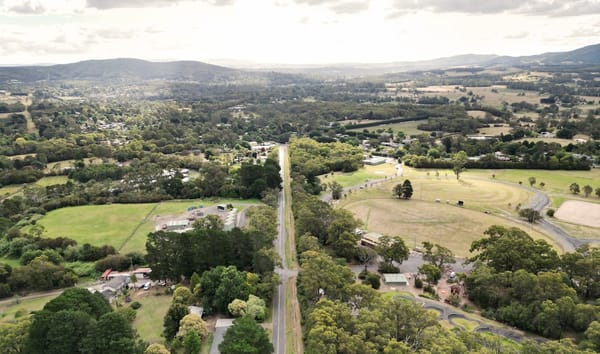Challenge-led or Mission-oriented? Exploring collective action approaches to transition, transformation and systems change
What is this 'Mission-oriented Innovation' everyone is talking about? Fieldnotes from a 2 day deep dive workshop into challenge-led approaches.
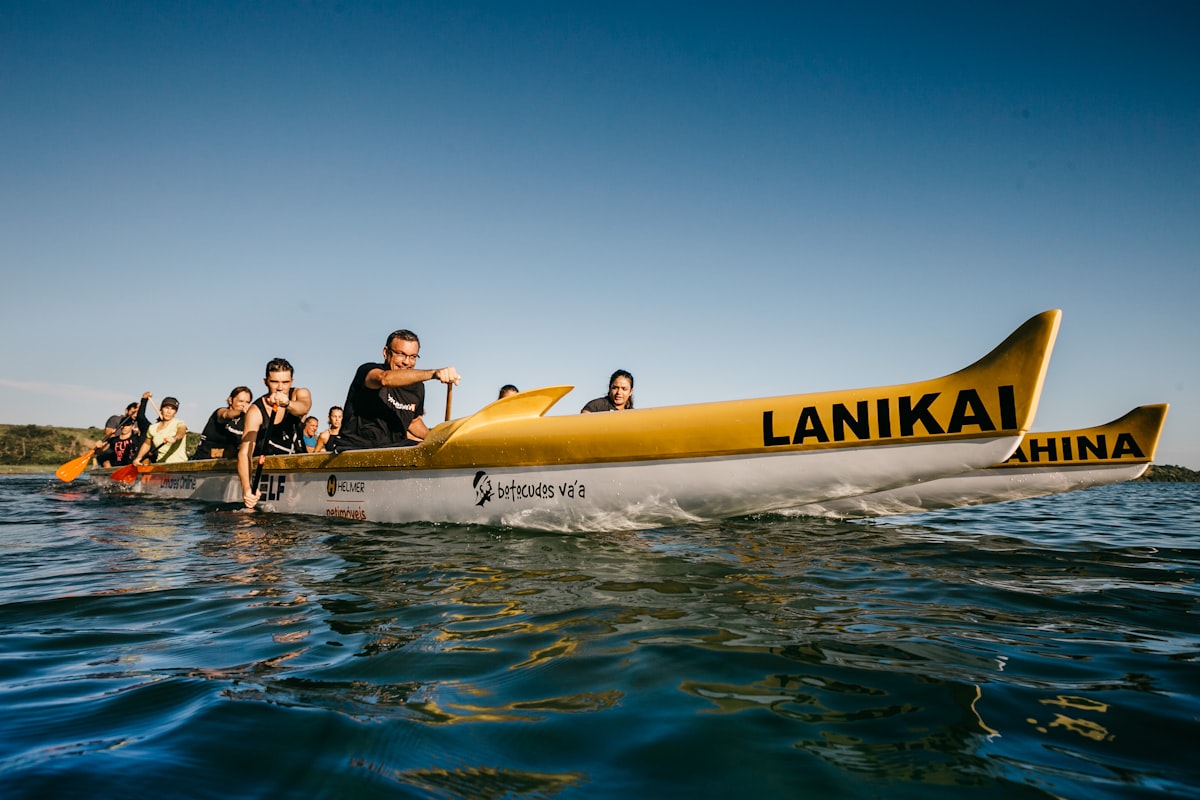
In October, after many false starts with covid and floods, the Yunus Centre (Griffith University) convened a group of us from Pacific Islands, Aotearoa New Zealand, WA, TAS, VIC, NSW and QLD to explore Challenge-led Mapping as an approach to collective action on large scale complex challenges.
In some parts of the world this is known as ‘Mission-oriented Innovation’ - most recently resurfaced by Mariana Mazzucato’s book ‘Mission Economy’ and expanded on by the likes of Vinnova’s “Mission-oriented innovation - a handbook”.
Here’s Dan Hill and Mariana Mazzucato discussing Mission-oriented innovation in the context of Cities:
Due to the colonial history of the term ‘mission’ in Australia, plus its association with a War footing, the Yunus Centre team has suggested a reframe to ‘Challenge-led’ for the Australian context. I’ll aim to use ‘Challenge-led’ from here on in.

The 2 day intensive workshop aimed to build people’s competency, confidence and practice, as well as contribute to further exploration on Yunus Centre’s behalf, of how to apply this approach in a range of contexts.
The rough outline of our time together was:
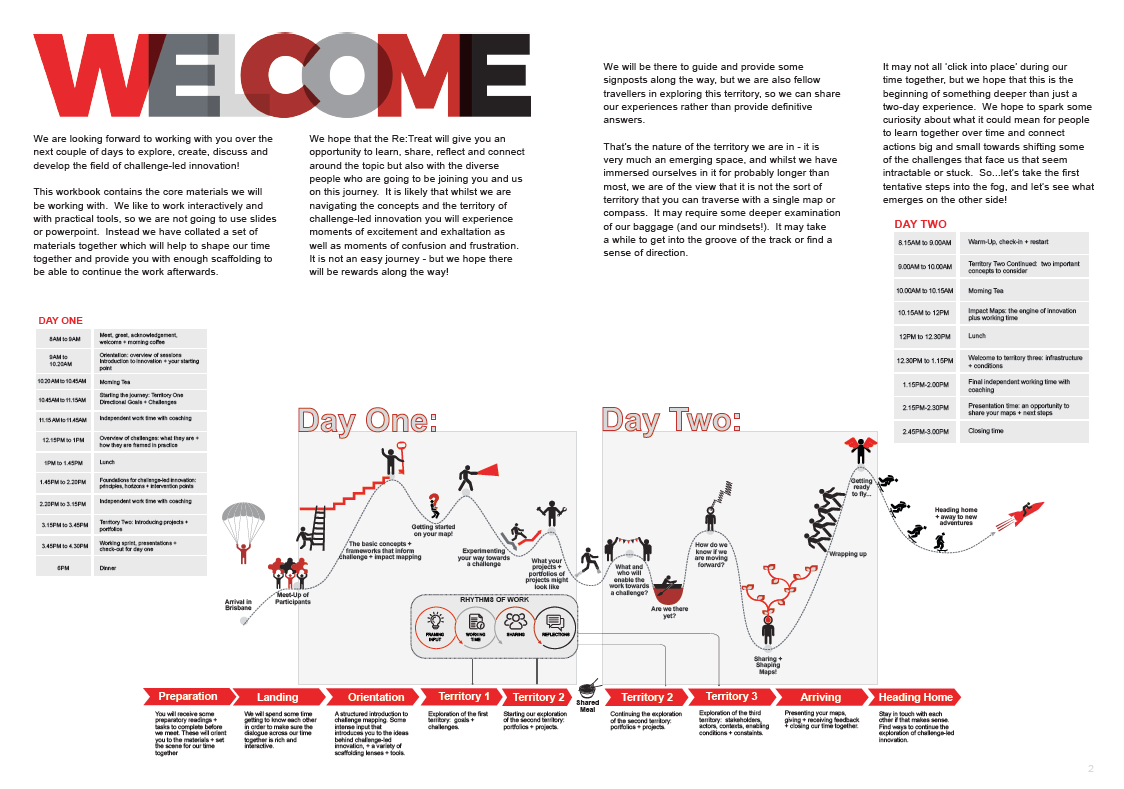
This post aims to capture some reflections which are still in percolation, share some examples, and indicate some next steps for my own approach to this work.
1) Articulating and representing a directive approach to change
Broadly, the Challenge-led approach feels like a useful way of framing and communicating change efforts where there is alignment towards (or at least loose agreement on) a small number of overarching goals.
Based on my research into communicating systems change efforts (and my almost-complete Luminary inquiry), the articulation and representation is a key building block in socialising, gaining buy in and participation from key stakeholders, and consistently communicating the progress and impact of change work over time.
To this end, the visualisation and communication of Challenge-led approaches was of particular interest to me. As I’ve dug deeper, despite a simple organising framework (Challenges > Portfolios > Projects), the communication of these approaches is quite a mixed bag.
A couple of examples I personally felt were on the better end of communication:
Missions València 2030
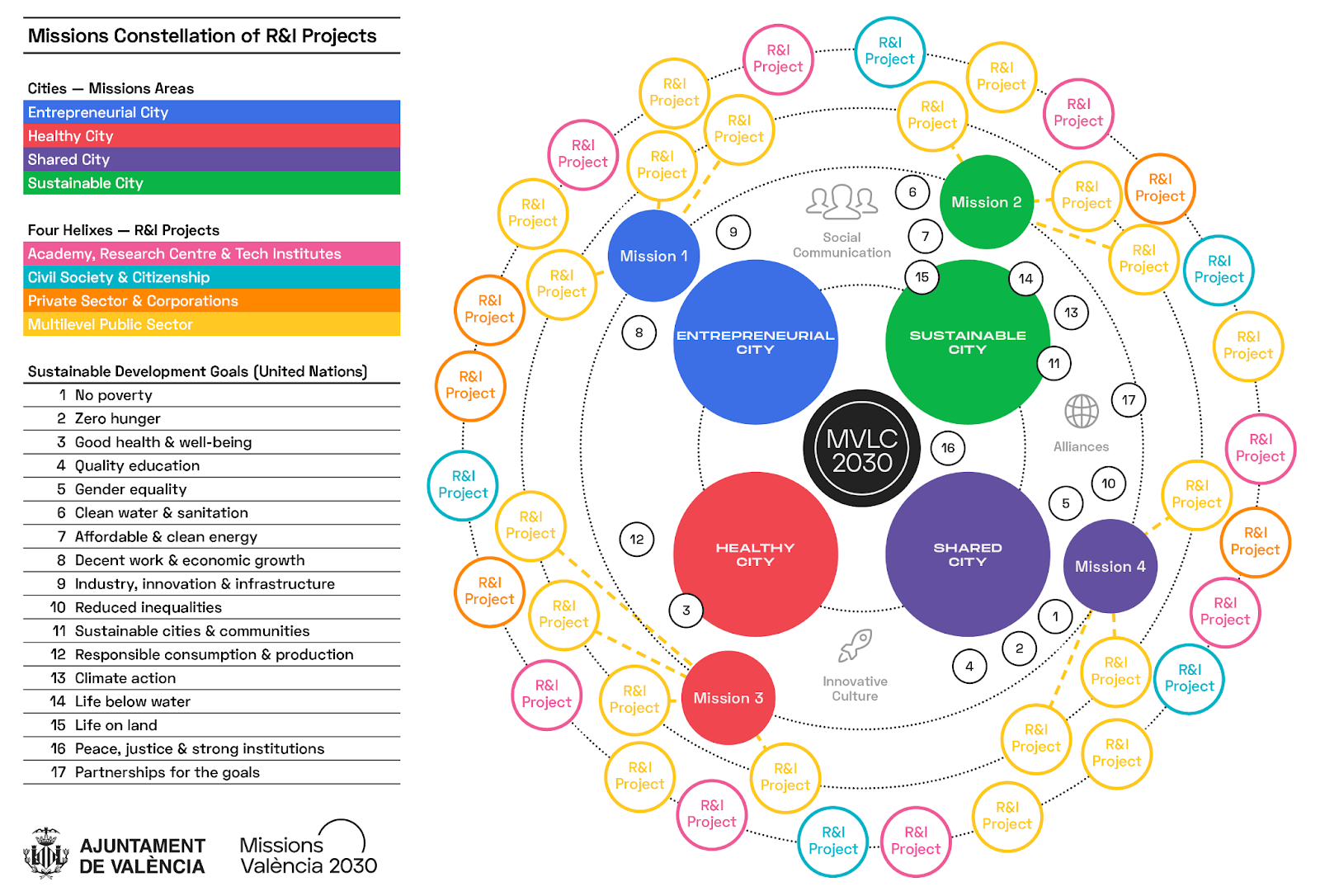
Here’s the website for Missions Valencia 2030:
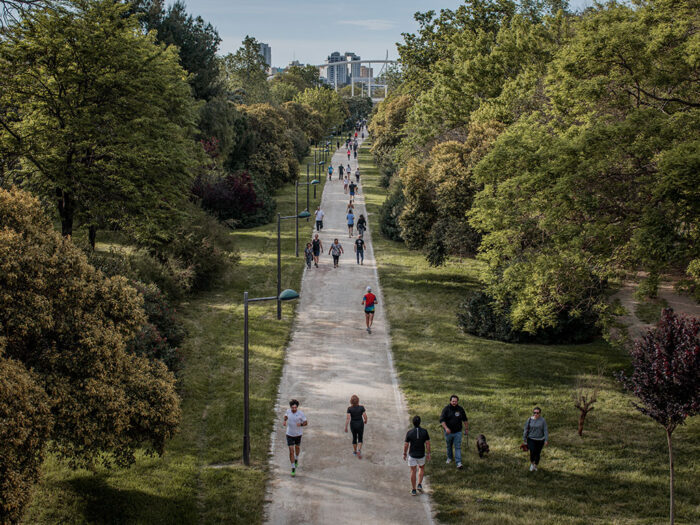
You can read the framing in an executive summary here:
https://www.missionsvalencia.eu/wp-content/uploads/2020/08/Executive-Summary-MVLC2030.pdf (PDF)
You can read the UCL case study on Missions Valencia here:

This high level framing is backed up by fairly compelling supporting content such as this trailer video for the Climate challenge area:
What I like about this:
- Clear and easy to understand the high level framing of the range of challenge areas
- Interactive elements to drill down through the layers of Portfolios, Projects, and find out more about what you might be interested in
- Participatory approaches used to help shape the challenges by citizens, meaning most of the language connects with people who were involved in the process
- Lots of photography of people and place throughout their communications content
- Quick and simple clarification on Missions
We Make Camden
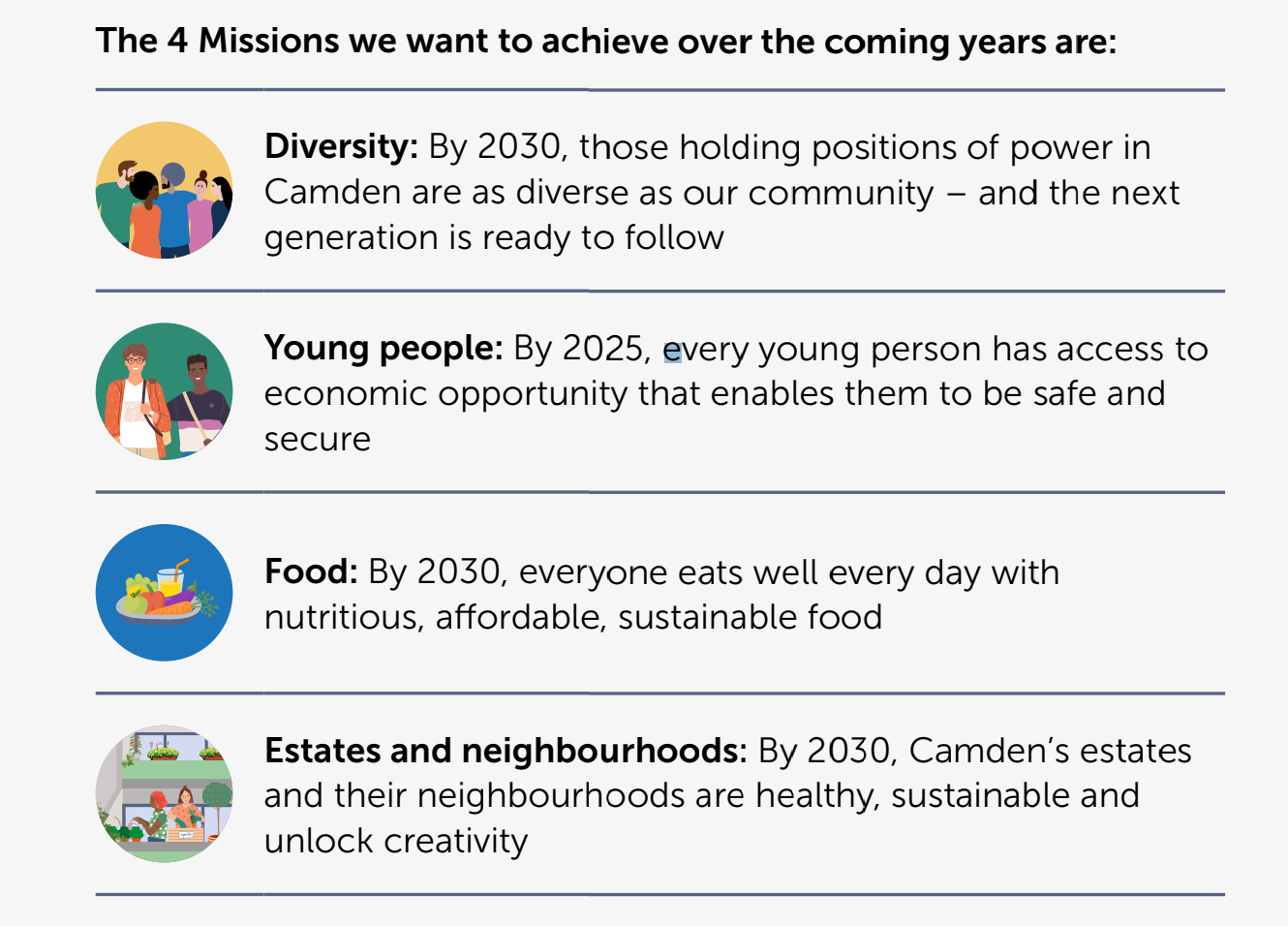
Here’s the website for We Make Camden:
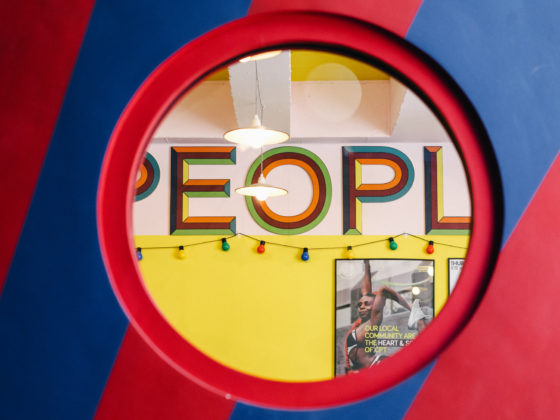
Here’s a high level summary document:
https://www.wemakecamden.org.uk/wp-content/uploads/2022/04/We-Make-Camden-Vision.pdf (PDF)
The website outlines the missions, and there is an extensive video series which brings the project to life through the voices of residents of Camden:
What I like about this example:
- Strong but simple visual approach which ties together the content on web, video, print/digital reports
- Use of illustration which is attempting to be a reflection of community diversity
- Use of sketchnote style to communicate throughout reports such as this one (PDF)
- Simple language and framing makes it easy to understand how the missions tie things together
2) Who gets a seat at the table?
From the examples in Mazzucato’s work, Challenge-led approaches have often focused on ‘top down’ Government-driven goals (USA’s “Moonshot” being the version often cited), however the likes of Vinnova (Sweden’s Innovation Agency) have shown how this can work in a more participatory, localised approach - developing Challenges from wide stakeholder participation, giving more of a ‘bottom up’ feel.
The ‘Mission-oriented innovation in action 2021 Casebook’ from UCL highlights 4 categories for how Challenge-led approaches have been developed and examples of each:
- Top-down coordination
- Sectoral consensus building
- Place-based missions
- Design-led approaches
This is an adaptation by Yunus Centre:
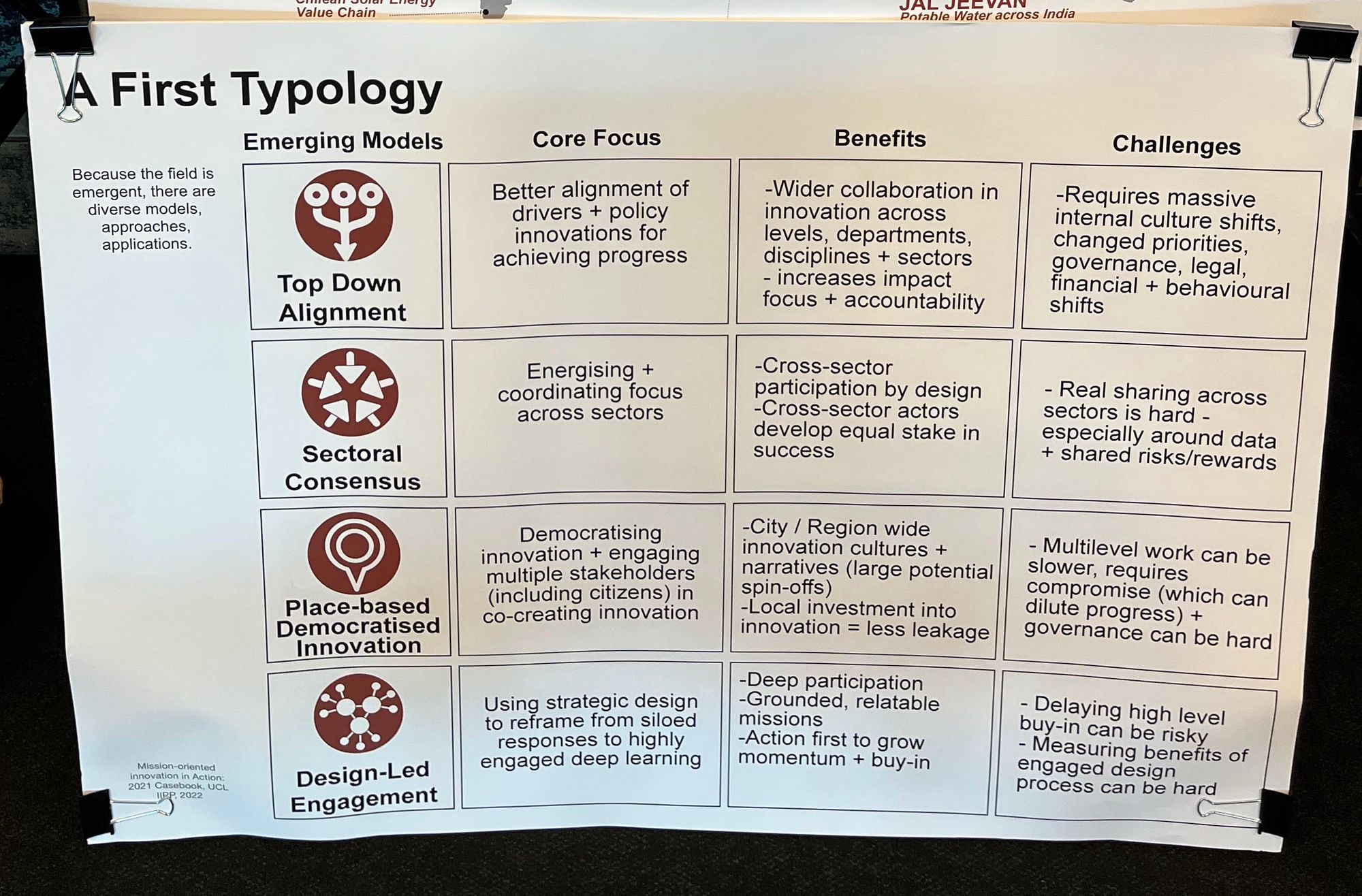
This was also explored by Dark Matter Labs in their post about ‘Mission Holding’, in which their approaches outlined were:
- Industrial or Innovation Strategy
- Portfolio led by purpose-driven STI Institutions
- Research-led missions
- Place-based missions
- Design-led missions
- Portfolio policy experimentation

On the question of who participates and shapes the direction of the missions then, the Challenge-led Approach is flexible and unopinionated, and left up to those who initiate proceedings to decide.
3) The enabling stack for collective action
The third part of the process we went through at the workshop was focused on Enabling Conditions. Alex Hannant mentioned that he believes this should be the first part of the process, but if you’re not clear on the challenge - it doesn’t make sense.
For me, after 15+ years of working on various collective action approaches for complex challenges such as local food systems, youth mental health, and biodiversity restoration - this is where I wanted to spend time and energy because it’s often where the effort towards ‘grand challenges’ have a tendency to break down.
The Yunus Centre led us into the conversation through the ‘Conditions Canvas’ which is focused on Challenge-Led Innovation specifically, but is of course useful for a broader range of collective action approaches.

I felt like we could have spent a whole day on this discussion, as it folded together:
- Capability & Capacity
- Fostering Diverse Participation
- Engagement of Critical Levers
- Sensemaking, Evaluation & Information Flows
- Clear Drivers & Narratives
- Flows of Funding & Investment
- Adaptive Governance Frameworks
- Leadership & Culture
This is perhaps the most interesting area for me at the moment, as I’m spending time looking at the (social) infrastructure which scaffolds two projects - a Net Zero transition research & education program, and a network of Living Labs across Monash University.
It has triggered some thinking about the need to capture and articulate a Capability Model, as well as visualising the "dark matter" of relationships, access to assets, enabling activities which come together to give shape and transparency to what had loosely been termed ‘enabling conditions and activities’ before.
Looking at different models of organising for collective action which give shape and form to how this work is resourced, recognised and prioritised include:
- Backbone organisations for Collective Impact projects - more info:
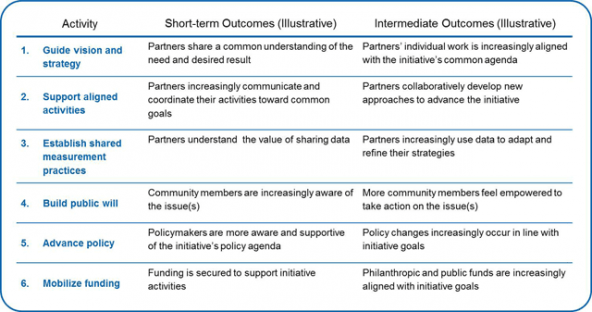
- Web3 & DAO - some useful information here:

- Constellation Governance - useful info here:

Reflections
As I sit and reflect on 15+ years in this space, I think about two main areas of inquiry.
Firstly I think about the prevalent belief among a circle of my friends and collaborators that relationality is the critical factor in whatever infrastructure is created to support these approaches. The best design is nothing without the trust, willingness to collaborate, and work needed to understand one another and keep finding middle ground.
Secondly I wonder about the practices, rituals and structures that indigenous communities had created over time, to support collective action. In Graeber & Wengrow’s ‘The Dawn of Everything’ which uses source documents of early contact between colonising forces and indigenous people to highlight that social organising, in some cases, was built on a more fluid pattern - adapting to the activity, season, and societal make up, rather than relying on a single organising approach such as rigid hierarchy. This fluidity of structure was accompanied by various rituals and events which actively sought to disrupt and change the patterns of power and relationship which build up during a particular way of organising.
This insight, perhaps, might lay the groundwork for an interesting series of intentional experimentation into patterns of ‘enabling conditions and infrastructures’ which adapt and change dependent on an agreed ‘seasonality’ of collective action activities.
Critique & Conclusion
Clearly there is more than just a buzz around Missions & Challenge-led approaches at the moment. Mazzucato's work is insightful, and missions/challenges connect with some of the work happening around the world on Portfolio approaches.
As well as the value of articulating these lofty goals and using them to bring people along on the journey, there needs to be a rapid development of the 'how' (or as Yunus Centre put it - the elements which make up the Conditions Canvas). Perhaps our best resource at the moment is Vinnova's 'Designing Missions Handbook' (linked earlier), and perhaps more of the 'how' really sits in the other disciplines, such as Portfolio Design & Management. What's clear is that there isn't a methodology™ for this work - it is a range of practices which there isn't consensus about 'best practice' yet. That is a sign of an emerging field of practice, so it doesn't surprise me.
Do the Challenge approaches offer something new? Perhaps. Having spent time watching a range of vehicles for collective action emerge, some delivering short term wins, some creating sustained change, and some promising a lot but proving unworkable - I see this as a continuation of that line of experimentation.
If this approach is (these approaches are?) responding to a lack of ambition for the scale of change needed, then perhaps this acts as a vehicle for important conversations about raising that ambition - elevating the likes of 'tackling climate change' towards the likes of a moonshoot. Is there any other approach doing this work at the moment?
Likewise, communicating the broad Challenges which people and organisations can get behind collectively (with or without structured consensus like something like Collective Impact might require) may have value. However we have seen the likes of the SDG's offering this kind of broad menu of high level goals, and whilst they have provided structured areas for investment and activity, progress remains behind the 2030 targets, and disrupted significantly by the global pandemic.
As I suggested earlier - the real work of Challenge-led approaches seems to be in working out how to deliver on the missions/challenges over time. This is the (messy) work of funding, governing, structuring collaboration, strategic experimentation, enabling diverse participation, building adaptive capacity, learning in networks, and investing in relationships across divides and alliances to hold things together over time.











